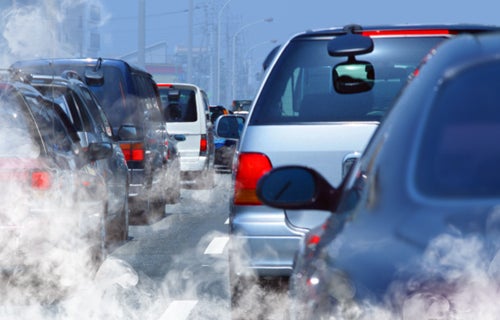
Would you take a green driving class to reduce emissions?
Teaching drivers about idling and accelerating too hard reduces greenhouse gas emissions and saves money, Waterloo researchers find

Teaching drivers about idling and accelerating too hard reduces greenhouse gas emissions and saves money, Waterloo researchers find
By Dave Pink Marketing and Strategic CommunicationsThe operators of corporate and government vehicle fleets can achieve big savings in fuel and significantly reduce greenhouse gas emissions by sending their drivers to eco-driving school, Waterloo researchers have found.
While the savings for each vehicle are small, the benefits over time for large fleets can be significant, says Jean Andrey, professor in Waterloo’s School of Geography and Environmental Management.

The study was conducted for the City of Calgary by Andrey, Michelle Rutty, Lindsay Matthews and Tania Del Matto. The City of Calgary had a sample of their drivers attend a course that focused on smart driving:
Changes in behaviour that directly reduce greenhouse gas emissions and save fuel were noted after the municipal drivers were given eco-driving training:
The study was done in three phases. In-vehicle monitoring devices, or CarChips, were installed in the 15 vehicles used by members of the city’s development and building department, and the fuel-consumption data was downloaded after one month.
Then, the drivers attended an “eco-driving” seminar, most for one hour while some took the more intensive three-hour training. Then it was back on the road, and after another month the CarChips data was downloaded again.
“My sense is that more is achievable, but this is a good first step,” says Andrey.
Between 2009 and 2011, Rutty, Matthews and Del Matto, conducted a similar comparison study of the drivers and the vehicle fleet at Blue Mountain Ski Resorts in Collingwood, with similar results. That study caught the attention of city officials in Calgary, so the students were enlisted to see if they could comparable results would be seen in Alberta.
“The City of Calgary has been very keen to take a role in environmental initiatives,” says Andrey.

Read more
Special issue of Waterloo Magazine celebrates women who lead, and explores equity in education and the workplace

Read more
Waterloo Magazine, Fall 2014: Smarter cars, high-flying students and better sex for those with bad backs

Read more
Here are the people and events behind some of this year’s most compelling Waterloo stories
The University of Waterloo acknowledges that much of our work takes place on the traditional territory of the Neutral, Anishinaabeg, and Haudenosaunee peoples. Our main campus is situated on the Haldimand Tract, the land granted to the Six Nations that includes six miles on each side of the Grand River. Our active work toward reconciliation takes place across our campuses through research, learning, teaching, and community building, and is co-ordinated within the Office of Indigenous Relations.